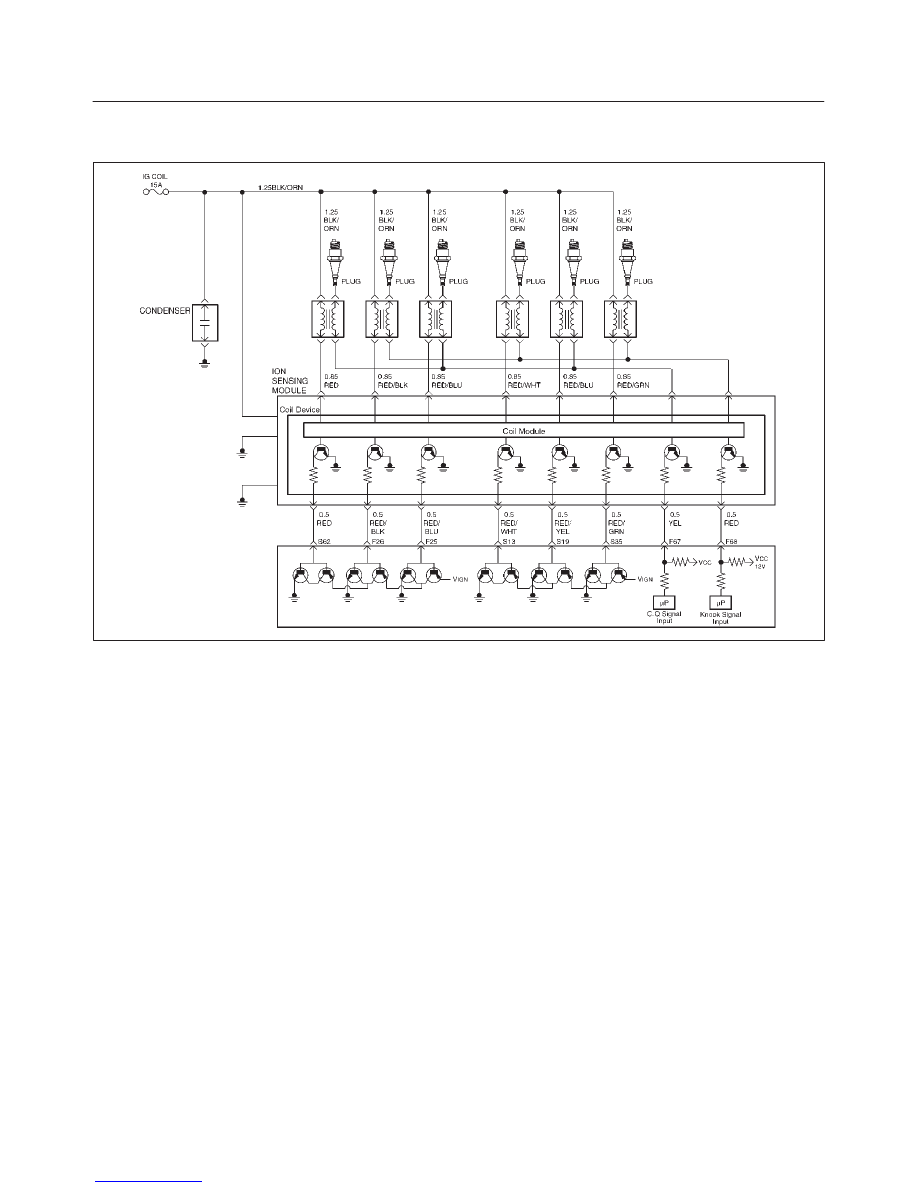Isuzu Trooper (2000 year). Manual - part 333

6E–461
TROOPER 6VE1 3.5L ENGINE DRIVEABILITY AND EMISSIONS
Diagnostic Trouble Code (DTC)
P1340 ION Sensing Module Cylinder ID Fault (Cylinder Synchronization Fail)
D06RY00067
Circuit Description
The Power Control Module (PCM) checks the validity of
the signals used in the ION Sensing module at the
following engine opreating conditions.
D
This test will return a fault if the cylinder
synchronization routine has not been completed after
a predetermined number of events after crank. This
test will detect fault that will prevent the PCM from
synchronaization, such as Knock Signal (KI) -
Combustion Quality (CQ) lines being swapped,
shorted spark plugs, ION Sensing module faults, an
PCM hardware faults.
Conditions for setting the DTC
D
Ignition voltage is between 11volt and 16 volts.
D
Engine speed is between 650rpm and 6500rpm.
D
No ECT DTCs set.
D
No injector DTCs set.
D
No Fuel Trim DTCs set.
D
No Misfire DTCs set.
D
No system voltage DTCs set.
Action Taken When the DTC Sets
D
The PCM will illuminate the malfunction indicator lamp
(MIL) the first time the fault is detected.
D
The PCM calculates an air flow value based on idle air
control valve position, throttle position, RPM and
barometric pressure.
D
The PCM will store condition which were present when
the DTC was set as Freeze Frame and in the Failure
Records data.
Conditions for Clearing the MIL/DTC
D
The PCM will turn the MIL “OFF” on the third
consecutive trip cycle during which the diagnostic has
been run and the fault condtion is no longer present.
D
A history DTC P1340 will clear after 40 cosecutive trip
cycle during which the warm up cycles have occurred
without a fault.
D
DTC P1340 can be cleared using the Tech 2 “Clear
Info” function or by disconnecting the PCM battery
feed.
Diagnostic Aids
An intermittent may be caused by the following:
D
Poor connectons.
D
Mis routed harness.
D
Rubbed through wire insulation.
D
Broken wire inside the insulation.
Check for the following conditions:
D
Poor connection at PCM-Inspect harness connectors
for backed out terminals, improper mating, broken
locks, improperly formed or damaged terminals,and
poor terminal to wire connection.
D
Damaged harness–Inspect the wiring harness for
damage. If the harness appears to be OK, observe the
moving connectors and wiring harnesses related to the
sensor.